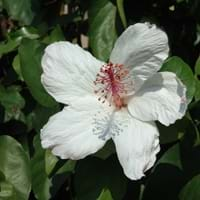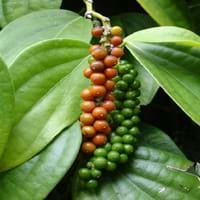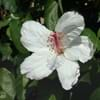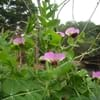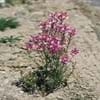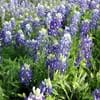Life Span
Annual and Perennial
Perennial
Type
Broadleaf Evergreen
Broadleaf Evergreen, Vines
Origin
North America, Mexico, Central America
India, Indonesia, Southeast Asia, Southern Asia
Types
Not Available
Red pepper, Orange pepper
Number of Varieties
Not Available
Habitat
gardens, Grassland, Homesteads, Subtropical climates, tropical environments
Moist Soils, orchards, Temperate Regions
USDA Hardiness Zone
9-15
8-15
AHS Heat Zone
Not Available
12 - 1
Sunset Zone
21,22
H1, H2, 8, 9, 14, 15, 16, 17, 18, 19, 20, 21, 22, 23, 24
Habit
Oval or Rounded
Clump-Forming
Minimum Width
Not Available
Flower Color
Gold
Lemon yellow
Flower Color Modifier
Bicolor
Bicolor
Fruit Color
Chocolate, Ivory, Black
Red, Green, Light Green
Leaf Color in Spring
Dark Green
Light Green, Dark Green
Leaf Color in Summer
Dark Green
Light Green
Leaf Color in Fall
Dark Green
Light Green, Dark Green
Leaf Color in Winter
Dark Green
Light Green, Dark Green
Leaf Shape
Ovate
Circular cordate
Plant Season
Spring, Summer, Fall, Winter
Spring, Summer, Fall, Winter
Sunlight
Full Sun, Partial Sun
Full Sun, Partial Sun, Partial shade
Type of Soil
Loam
Loam, Sand
The pH of Soil
Neutral
Acidic, Neutral, Alkaline
Soil Drainage
Well drained
Average
Bloom Time
Early Summer, Summer, Late Summer, Early Fall, Fall, Indeterminate
Not Available
Tolerances
Drought, Variety of soil types
Drought
Where to Plant?
Ground, Pot
Container, Ground
How to Plant?
Stem Cutting, Tip cutting, Vegetative Reproduction
Seedlings, Stem Planting, Vegetative Reproduction
Plant Maintenance
Medium
Medium
Watering Requirements
It cannot sustain wet-feet, Keep the Soil well drained, Requires watering in the growing season, Water Deeply, Water frequently while growing, Water more in summer, Water when soil is dry
Do Not over Water, Sprinkle water over foliage, Water every two or three days during warmer months
In Summer
Lots of watering
Lots of watering
In Spring
Moderate
Moderate
In Winter
Average Water
Average Water
Soil pH
Neutral
Acidic, Neutral, Alkaline
Soil Type
Loam
Loam, Sand
Soil Drainage Capacity
Well drained
Average
Sun Exposure
Full Sun, Partial Sun
Full Sun, Partial Sun, Partial shade
Pruning
A hard prune may be necessary if the plant becomes woody, Cut leaves after fall, Cut or pinch the stems, Pinch or prune as they grow to promote branching and bushiness, Prune for shortening long shoots, Prune in early summer, Remove deadheads
A hard prune may be necessary if the plant becomes woody, Remove dead branches, Trim each shoot back to the first set of leaves
Fertilizers
Apply 10-10-10 amount, Balanced liquid fertilizer, Do not fertilize new plants until at least a month, Use a low phosphate fertilizer to improve the quality of the blooms
10-10-10 diluted liquid fertilizer, All-Purpose Liquid Fertilizer, Do not let fertilizers touch the leaves
Pests and Diseases
Aphids, Mealybugs, Red spider mite, Scale, Thripes, Whiteflies
Aphids, Beetles, Root rot, Rust, Scab
Plant Tolerance
Drought, Variety of soil types
Heat Tolerance, Humidity, Salt and Soil Compaction
Flowers
Showy
Not Available
Flower Petal Number
Single
Single
Foliage Texture
Medium
Medium
Foliage Sheen
Glossy
Matte
Attracts
Bees, Butterflies, Hummingbirds
Aphids, Leafminer, Snails, Squirrels
Allergy
no allergic reactions
Oral Allergy
Aesthetic Uses
Beautification, Borders, Landscape Designing
Beautification, Cottage Garden, Decorating walls
Beauty Benefits
Hair Conditioner, Not Available, Prevents greying of hair, Prevents Premature Baldness, Promotes Healthy Hair, Promotes healthy skin, Speed hair growth
Acne, Blackheads
Environmental Uses
Air purification
Fixes Nitrogen, Insect Repellent
Medicinal Uses
anti-inflammatory, Diuretic, Hair Loss, High blood pressure, Vitamin C
Acid Reflux, Dysentry, Healthy teeth, Inflammation, Oral health
Part of Plant Used
Flowers, Leaf Stalks, Leaves
Dried seeds
Other Uses
Culinary use, Employed in herbal medicine, Jam, Jelly, Making Shampoo, Oil is used for aromatherapy, Oil is used in perfume, soaps, creams, etc., Showy Purposes, Traditional medicine, Use in Chinese herbology, Used As Food, Used as Ornamental plant, Used for bedding in gardens, Used for fragrance, Used for its medicinal properties, Used in making beverages, Used in paper industry, Used in salads, Used to make hair tonic
Culinary use, Oil is used for aromatherapy, Used in herbal medicines
Used As Indoor Plant
No
Yes
Used As Outdoor Plant
Yes
Yes
Garden Design
Container, Foundation, Houseplant, Mixed Border, Tropical
Container, Feature Plant, Hedges, Screening / Wind Break, Tropical
Botanical Name
Hibiscus arnottianus
Piper nigrum
Common Name
White Hibiscus
Peppercorn, Piper, Black pepper
In Hindi
सफेद हिबिस्कुस
काली मिर्च
In German
Weiß Hibiscus
Pfeffer
In French
white Hibiscus
Piper nigrum
In Spanish
hibisco blanco
Poivrier noir
In Greek
White Hibiscus
μαύρο πιπέρι
In Portuguese
Hibiscus branco
Pimenta-preta
In Polish
Biały Hibiscus
Pieprz czarny
In Latin
Hibiscus album
nigrum piperis
Phylum
Magnoliophyta
Magnoliophyta
Class
Magnoliopsida
Magnoliopsida
Family
Malvaceae
Piperaceae
Clade
Angiosperms, Eudicots, Rosids
Angiosperms, Monocots
Tribe
Hibisceae
Not Available
Subfamily
Malvoideae
Not Available
Number of Species
Not Available
Season and Care of White Hibiscus and Black pepper
Season and care of White Hibiscus and Black pepper is important to know. While considering everything about White Hibiscus and Black pepper Care, growing season is an essential factor. White Hibiscus season is Spring, Summer, Fall and Winter and Black pepper season is Spring, Summer, Fall and Winter. The type of soil for White Hibiscus is Loam and for Black pepper is Loam, Sand while the PH of soil for White Hibiscus is Neutral and for Black pepper is Acidic, Neutral, Alkaline.
White Hibiscus and Black pepper Physical Information
White Hibiscus and Black pepper physical information is very important for comparison. White Hibiscus height is 600.00 cm and width 60.00 cm whereas Black pepper height is 180.00 cm and width Not Available. The color specification of White Hibiscus and Black pepper are as follows:
White Hibiscus flower color: Gold
White Hibiscus leaf color: Dark Green
Black pepper flower color: Lemon yellow
- Black pepper leaf color: Light Green and Dark Green
Care of White Hibiscus and Black pepper
Care of White Hibiscus and Black pepper include pruning, fertilizers, watering etc. White Hibiscus pruning is done A hard prune may be necessary if the plant becomes woody, Cut leaves after fall, Cut or pinch the stems, Pinch or prune as they grow to promote branching and bushiness, Prune for shortening long shoots, Prune in early summer and Remove deadheads and Black pepper pruning is done A hard prune may be necessary if the plant becomes woody, Remove dead branches and Trim each shoot back to the first set of leaves. In summer White Hibiscus needs Lots of watering and in winter, it needs Average Water. Whereas, in summer Black pepper needs Lots of watering and in winter, it needs Average Water.
